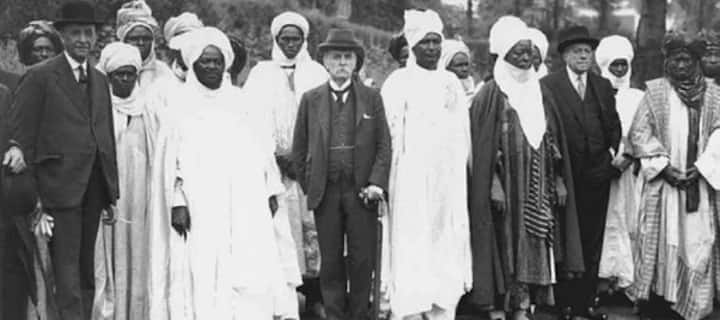Nigerians seeking greater significance for their country’s existence may be dismayed to learn that none exists. They may be disappointed to discover that there was no meaning to their country’s existence. This is not to attack the origin of the ‘heroes past’ or the belief of the loyal citizens of green, white and green, but to analyze the compartments that made up the country “Nigeria.”
From the death of Mungo Park near Bussa in 1806 to the end of the century, there was a continuing interest in Nigeria on the part of British explorers, anti-slavery activists, missionaries, and traders. Nigeria became the center of exploration and a hunting location for the British forces. Between 1821 and 1900, British officers continued to create initiatives and propose rulership mechanisms to establish a Nigerian state.
From Hugh Clapperton of 1823, Richard Lander of 1825, and John Lander of 1830, to Lord Federick Lugard of 1894; these British officers camped in Nigeria’s protectorates with the purpose of exploring the economic and social fabrics of the country. The significant factor that created the Nigerian state was formulated by Lord Federick Lugard in 1914 when he merged the Northern and Southern Protectorates to form Nigeria.
Lugard joined the Royal Niger Company in 1894 and was dispatched to Borgu to oppose French incursions, and in 1897 he was given the task of transferring the Royal West African Frontier Force from local duties to British command.

Lugard joined the Royal Niger Company in 1894 and was dispatched to Borgu to oppose French incursions. In 1897, he was given the task of transferring the Royal West African Frontier Force from local duties to British command, and over the years, he has been succeeding. His exploits in Nigeria were motivated by a self-serving and ignoble obsession with maximum economic exploitation of the “Niger area” and administrative convenience.
Lord Luard began his exploration after his appointment as the high commissioner and commander-in-chief of the protectorate of northern Nigeria. At the time, the Niger Coast Protectorate was expanded with its seat of government at Lagos to become Southern Nigeria. On the other hand, the Emir of Kano and Sultan of Sokoto in the North were not ready for British rule.

In Southern Nigeria, administrative policies and delegations were easy as a result of the high percentage of educated elites and human resources in the region, while in the north, a lot of techniques were structured to ensure the possibility of the indirect rule system. One of the techniques he used was ensuring that in each territory, any chief willing to cooperate and adhere to his rules was given an opportunity to retain his chieftaincy position and would be given power; this was how Lugard won the trust of the northerners.
In 1912, Lord Lugard was appointed the governor of the Northern and Southern protectorates and was given the order to merge them. In 1914, the plan to merge the Northern and Southern Protectorates became a success—these protectorates were what formed the country of Nigeria. ’





